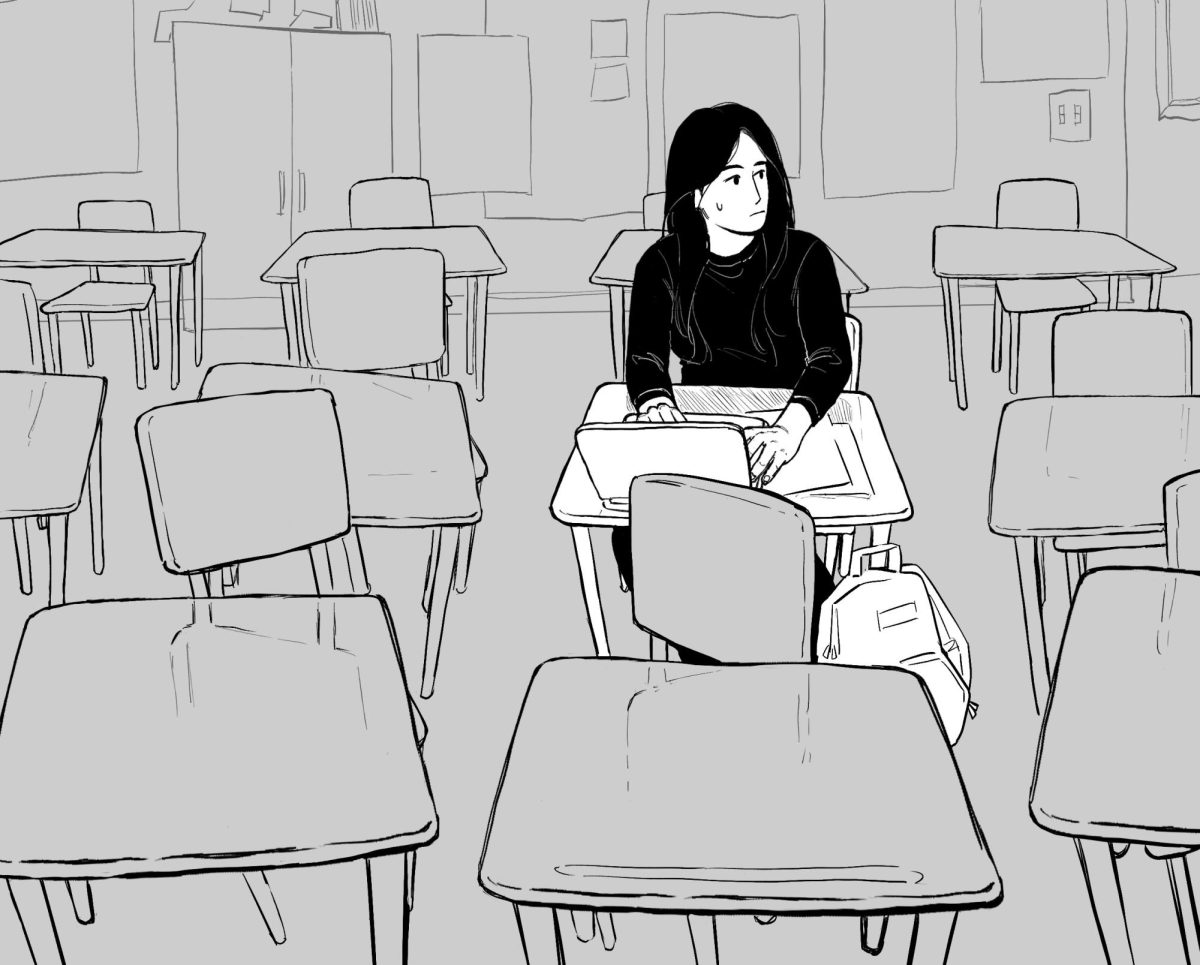Nearly 25% of students at Central were chronically absent last year, according to the Illinois Report Card. That’s up from 23.2% the year before, and up from less than 10% for the three years prior.
Absenteeism rates are a problem in and of themselves, but they bring to light a far deeper issue: the growing attitude among students that attending class is optional.
In the view of the Central Times Editorial Board, two things in recent years have illustrated for students that their daily attendance is not necessary: blended classes and the COVID-19 pandemic.
The way that blended classes showed students they don’t need to be in class is pretty simple. When instruction is delivered in a way that only requires students to be in the classroom two or three times a week, it becomes rather apparent that in-person class time isn’t needed every day.
COVID-19 involved plenty of asynchronous learning in early months, meaning students didn’t need to interact with teachers in real time to learn.
After students returned to classrooms, teachers were encouraged to put more materials on Canvas, (District 203’s online learning management system) to give absent students an opportunity to follow along at home.
Each of these, be it by making kids learn independently or giving them the chance to catch up on work at home or in a location and at a time of their choice, showed students that being in class every day wasn’t important.
So with blended learning and Coronavirus adaptations in mind, some students realized that being in class every day isn’t strictly necessary.
What’s more, those students are right.
Multiple members of the Editorial Board expressed that their performance in school is mostly unaffected by their chronic absenteeism. With all of the resources available to students, learning outside of the classroom has never been easier.
It seems rather rational, then, that students haven’t felt the need to come into every class every day of the week.
Maybe, then, chronic absenteeism isn’t inherently a problem. Maybe the problem is the system that showed students they didn’t need to be in school every day, and then required them to be anyway.
The real problem here is that there are some learning experiences that get caught in the crossfire of absenteeism. Students no longer think some uses of class time are valuable (like in-class reading, work time, video watching, etc.), and as a result don’t come to class every day, which causes them to miss out on some types of learning that are better in person (lectures, discussions, labs, etc.).
The way to fix this is to organize classes differently. Maybe we make more classes blended, allowing kids to be independent for things they would skip anyways, while dedicating in-person days to things that really need to be done in person.
This would build an expectation in students that in-class time will be used well, and would hopefully give them a reason to come in when required.
There are plenty of other ways to incentivize kids to be in class for important content, including making the in-person experience tangibly better than the at-home version. Make lectures more than just reading off slides kids can see at home. Make discussions more than just posts on Canvas. Make class time matter.
Of course, those solutions won’t cut absenteeism numbers to zero. Some kids have medical reasons for being absent or don’t come to school because they don’t find it important or a relevant use of their time, and changing teaching methods won’t keep those kids in the classroom.
But cutting absenteeism to zero isn’t the point. The point is using class time more efficiently, giving students a reason to come in when they need to, and letting them leave when they don’t.
Absenteeism isn’t the problem that needs solving, it’s the use of class time that makes kids feel that they don’t need to come in. So address it. Make class time more valuable to students, and maybe the chronic absenteeism rates will fall.




